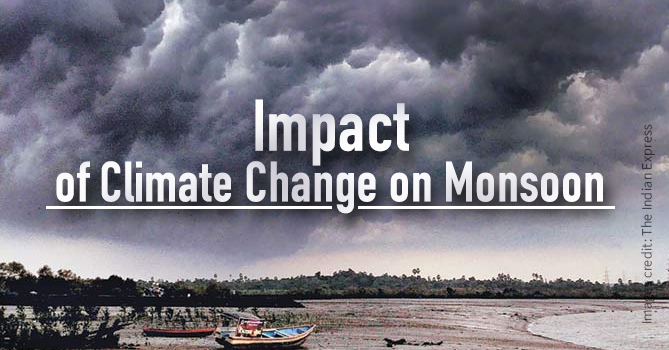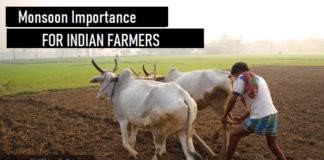Since time immemorial, India has enjoyed the predictable rhythm of monsoon. Once a year, from early June onwards, the water vapours collected from over the Indian Ocean arrive in India in the form of South West Monsoon Winds bearing rain clouds and replenish the lands parched from the hot summer months. More than a billion people depend upon this precise timing of Monsoons based on vast global systems of winds. We have no control over it but unfortunately, in recent times, human beings by their own folly have managed to disturb the very system that made Monsoons predictable.
How Is Monsoon In India Formed
To know how we have disrupted the Monsoons we first need to understand the pattern by which it is formed.
- Intense solar heating of the Northern Indian Ocean in late spring occurs.
- The plains of Northern India as well as the Tibetan Plateau also heats up.
- Temperature and pressure gradients are formed from south to north.
- The pressure gradient leads to a cross-equatorial flow of winds which are laden with moisture collected from the India Ocean.
- The winds enter India from the south-west coast and proceed towards Bay of Bengal, collecting more moisture till they turn North causing more rains.
What would happen if that rhythm changed course?
India has been experiencing a deficit in Monsoon in the last few years. There is uneven distribution of rainfall because of which it is becoming difficult for the soil to fully absorb and reservoirs to collect water. It is also severely affecting agriculture which forms a major portion of the economy of India.
This uneven distribution is as a result of a combination of the global cycles such as El Niño interacting in unpredictable ways with human-driven climate change. Now it is becoming more difficult to discern the predictability of Monsoons.
- According to Raghu Murtugudde, co-author on the study and professor of Earth Systems Science at the University of Maryland, “A changing climate does not necessarily mean that we are already seeing the result of anthropogenic climate change. When you have a system like the monsoon which has a very high variability of its own, then global warming signals take time to emerge. Against that background of high variability, global warming signals may in turn be interacting with natural cycles in ways that we cannot yet predict.”
- According to experts, while the Indian Ocean is becoming warm, the increasing pollution levels across South Asia have slowed the warming of the land surface. Thus the temperature difference between land and sea has lessened affecting the temperature and pressure gradients which in turn is weakening the intensity of the monsoons.
- India is also experiencing extreme rainfall events according to a study conducted by the Indian Institute of Tropical Meteorology, Pune, and the Indian Institute of Science, Bengaluru.
- According to the study, extreme rain events during the monsoons have increased over central India in the last fifty years, while moderate rain events have decreased. This is due to the Western Disturbances in North India and Western Himalayas as well as increasing temperatures of the Tibetan Plateau.
- In fact, the same Western Disturbance in North India has caused the devastating Uttarakhand floods in June 2013, as well as hailstorms that destroyed rabi crops across Maharashtra in March of 2014 and 2015.
- A 2015 study published in Nature that examined the last century of monsoon data across the South Asian subcontinent found a downward trend in rainfall over all – with a 10-20% decrease over the area spanning central-east India.
Much of India depends heavily on Monsoons, especially for agricultural purposes. When this rainfall is affected, and becomes unpredictable, it becomes difficult for the farmers to discern the kind of crops they need to grow. M. Murugan at Kerala Agricultural University, who researches the impact of climate change on Indian agriculture suggests that the farmers need to adapt to the changing pattern, and look for parallel solutions like planting mixed crops rather than monocultures.
Monsoon 2017
While Kerala welcomed this year’s Monsoon on May 30, the Northern part of India had a long wait and Southwest Monsoon 2017 reached Delhi-NCR, Rajasthan and Himachal Pradesh, remaining areas of Madhya Pradesh, Uttar Pradesh, and Uttarakhand along with some areas of Haryana on 2 July, 2017. The Northern limit of the Monsoon is at present passing through Barmer, Sikar, Sonipat, Shimla, Baderwah, Dharamsala, and Pahalgam.
We need to limit global warming. It is the key solution to bring back the precise and predictable cycle of Monsoons in India. Adaptation to changing patterns cannot be a permanent solution. It can only complement the process of undoing global warming.






